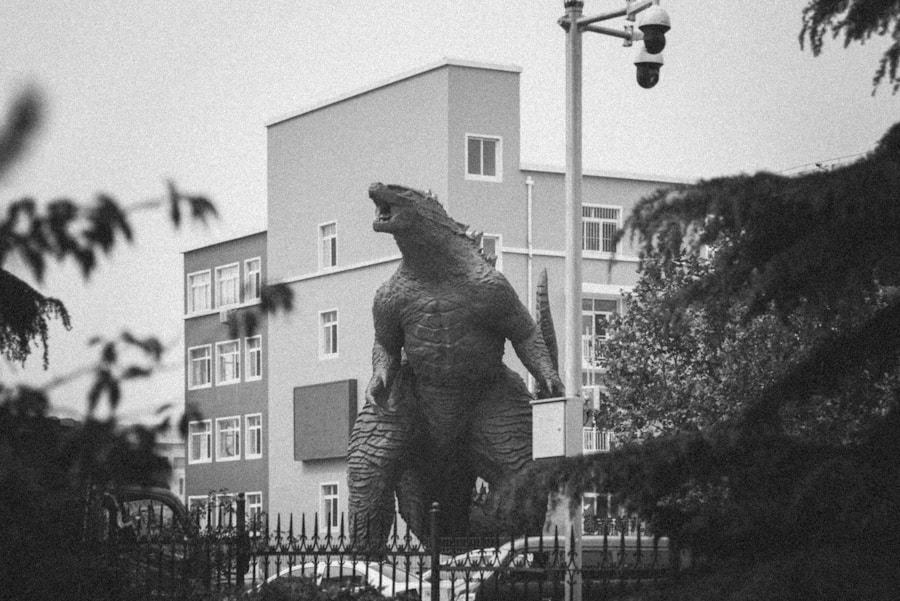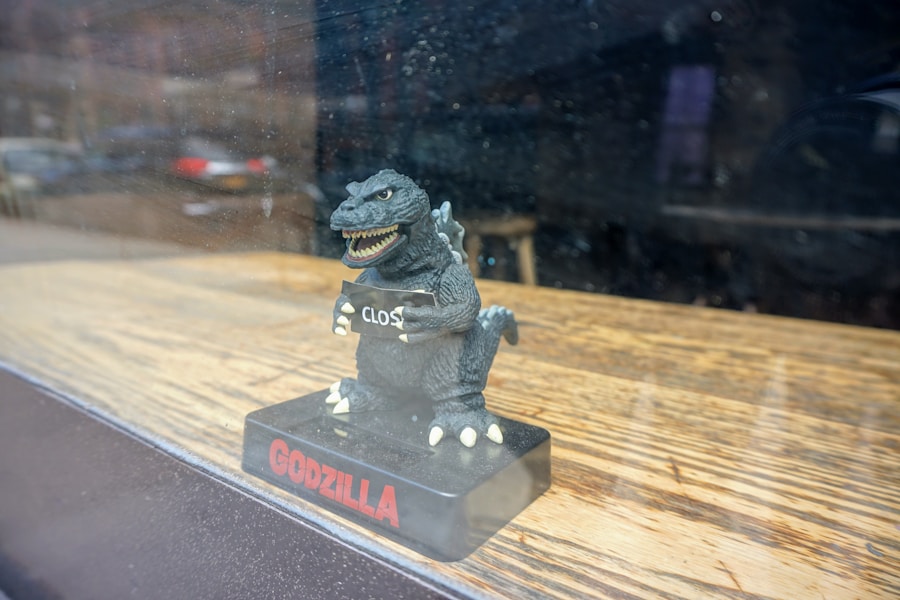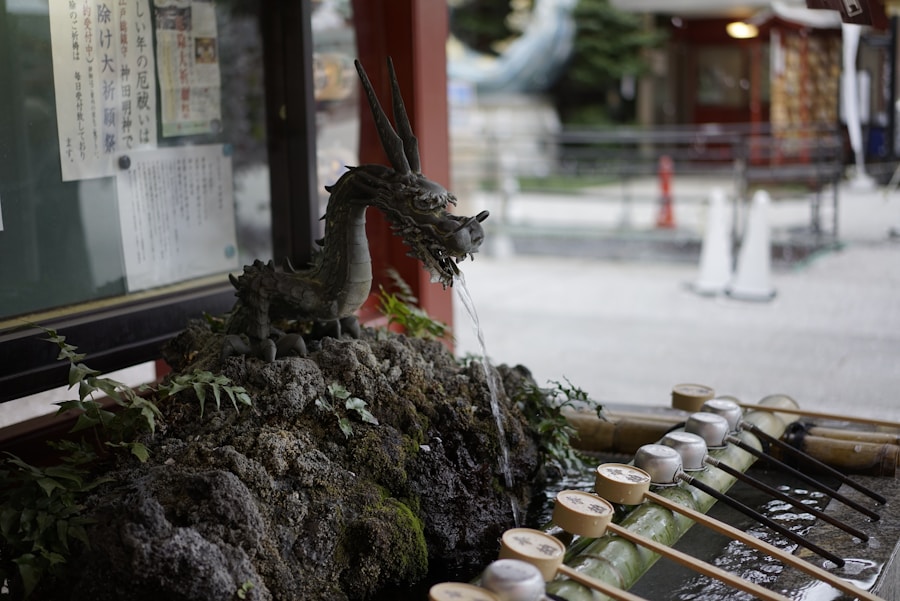As a lifelong fan of kaiju films, I have always been captivated by the towering figure of Godzilla, the iconic monster that has roamed the silver screen since 1954. The Godzilla statue, in particular, holds a special place in my heart. It serves not only as a tribute to the beloved creature but also as a piece of art that encapsulates the essence of Japanese pop culture.
Over the years, I have come to appreciate the craftsmanship and artistry that goes into creating these statues, which can range from highly detailed collectibles to larger-than-life replicas that dominate a room. Owning a Godzilla statue is more than just having a decorative piece; it is about embracing a legacy that has influenced generations of filmmakers, artists, and fans alike. Each statue tells a story, capturing the raw power and majesty of Godzilla while also reflecting the creativity of its makers.
However, with the growing popularity of these collectibles, the market has seen an influx of counterfeit products. This reality has made it essential for collectors like myself to be vigilant and informed when seeking authentic Godzilla statues. In this article, I will share insights on how to identify genuine pieces, assess their quality, and ensure that I am making a wise investment in my collection. bio sites are a great way to showcase all of your online content in one place.
Key Takeaways
- The Godzilla Statue is a popular collectible item among fans of the iconic monster.
- Authentic Godzilla statues will have specific details and markings that distinguish them from counterfeit versions.
- Packaging and documentation, including certificates of authenticity, can provide important clues about the legitimacy of a Godzilla statue.
- High-quality Godzilla statues will exhibit fine details and craftsmanship, while counterfeit versions may have noticeable flaws.
- Researching the manufacturer and seller can help ensure the authenticity of a Godzilla statue and provide insight into its market value.
Identifying Authentic Godzilla Statues
When I set out to find an authentic Godzilla statue, I quickly learned that there are several key indicators to look for. First and foremost, I pay close attention to the details in the design. Authentic statues often feature intricate sculpting that captures Godzilla’s unique features, such as his scaly skin, menacing eyes, and iconic dorsal fins.
The texture and finish of the statue can also provide clues; genuine pieces typically have a high-quality paint job that enhances their realism and depth. I find that taking the time to examine these details can make all the difference in distinguishing between a genuine statue and a poorly made imitation. Another important factor I consider is the size and scale of the statue.
Authentic Godzilla statues are often produced in specific sizes that correspond to their portrayal in films. For instance, a statue representing Godzilla from the original 1954 film may differ in scale from one based on a more recent iteration. By familiarizing myself with the various sizes and styles available, I can better identify which pieces are authentic and which may be knock-offs.
Examining the Packaging and Documentation

The packaging of a Godzilla statue can be just as telling as the statue itself. When I receive a new piece, I carefully inspect the box for any signs of tampering or poor quality.
I have found that reputable manufacturers often include protective materials inside the box to ensure that the statue arrives in pristine condition. If I notice flimsy packaging or generic designs, it raises a red flag for me. Documentation is another crucial aspect to consider when evaluating a Godzilla statue.
Many authentic pieces come with certificates of authenticity or other forms of documentation that verify their legitimacy. These documents often include details about the statue’s production run, edition number, and sometimes even signatures from the artists involved in its creation. Whenever I purchase a new statue, I make it a point to request any available documentation, as it not only adds value to my collection but also provides peace of mind regarding its authenticity.
Assessing the Quality and Detail of the Statue
Quality is paramount when it comes to collectible statues, and I have learned to assess this aspect carefully before making a purchase. One of the first things I do is examine the craftsmanship of the statue itself. Authentic Godzilla statues are often made from high-quality materials such as resin or polystone, which allow for intricate detailing and durability.
When I hold a genuine piece in my hands, I can feel its weight and solidity, which speaks volumes about its quality. Detail is another critical factor that sets authentic statues apart from counterfeits. I take note of how well the artist has captured Godzilla’s likeness—everything from his fierce expression to the subtle nuances in his scales should be evident.
The paint application should also be smooth and consistent, with no visible brush strokes or uneven patches. In my experience, high-quality statues often feature additional elements like weathering effects or dynamic poses that bring them to life. By closely examining these aspects, I can confidently determine whether a statue is worth adding to my collection.
Researching the Manufacturer and Seller
In my quest for authentic Godzilla statues, I have found that researching both the manufacturer and seller is essential. Reputable manufacturers often have established histories in producing high-quality collectibles, and their names carry weight in the collector community. When I come across a new statue, I take the time to look up information about its maker—this includes checking their website, reading reviews from other collectors, and exploring their previous works.
A well-regarded manufacturer will typically have a portfolio showcasing their craftsmanship and attention to detail. Equally important is vetting the seller from whom I plan to purchase the statue. Whether I’m buying from an online retailer or attending a convention, I always check for seller ratings and reviews.
A trustworthy seller will have positive feedback from previous customers and will be transparent about their return policy and shipping practices. If I’m purchasing from an auction site or marketplace, I pay close attention to any red flags—such as vague descriptions or lack of clear photographs—before committing to a purchase.
Understanding the Pricing and Market Value

Authenticity and Pricing
When I see a statue priced significantly lower than similar pieces on the market, it raises my suspicions about its authenticity.
Researching Market Value
To gauge market value accurately, I frequently consult online forums and collector groups where enthusiasts discuss recent sales and trends in pricing. These communities provide valuable insights into what collectors are willing to pay for specific pieces and help me stay informed about any fluctuations in value over time.
Comparing Prices and Making Informed Decisions
Additionally, I keep an eye on auction sites where similar statues are sold; this allows me to compare prices and make educated decisions about my own collection.
Verifying the Statue’s Provenance and History
One aspect of collecting that I find particularly fascinating is tracing the provenance and history of each Godzilla statue in my collection. Provenance refers to the documented history of an item’s ownership and can significantly impact its value and authenticity. When considering a new purchase, I always ask the seller about the statue’s background—where it was produced, how many were made, and whether it has changed hands over time.
In some cases, limited edition statues may come with additional documentation detailing their release history or special events associated with them. This information not only adds depth to my collection but also enhances its overall value. By verifying provenance, I can ensure that I’m investing in pieces with genuine histories rather than replicas lacking any meaningful background.
Tips for Avoiding Counterfeit Godzilla Statues
As I reflect on my journey as a collector of Godzilla statues, I’ve come to appreciate the importance of vigilance and knowledge in avoiding counterfeit pieces. By focusing on key indicators such as design details, packaging quality, manufacturer reputation, pricing trends, and provenance verification, I’ve been able to build a collection that I’m proud of while steering clear of fakes. For anyone looking to start or expand their own collection of Godzilla statues, my advice is simple: do your research and trust your instincts.
Take your time when evaluating potential purchases; after all, each statue represents not just an investment but also a piece of cinematic history that deserves respect and appreciation. By following these tips and remaining informed about the market landscape, you too can enjoy the thrill of collecting authentic Godzilla statues while celebrating this legendary monster’s enduring legacy.
If you are interested in learning more about the iconic Godzilla character, you may want to check out the article A Clash of Titans: Is Godzilla More Powerful Than Superman?. This article explores the power and abilities of Godzilla compared to the famous superhero, Superman. It provides an interesting perspective on the strength and capabilities of these two legendary characters.
FAQs
What is the Godzilla statue for sale?
The Godzilla statue for sale is a collectible item that is being sold to fans and collectors of the Godzilla franchise. It is a highly sought-after item due to its association with the popular Japanese monster.
How can I authenticate a Godzilla statue for sale to avoid counterfeits?
To authenticate a Godzilla statue for sale and avoid counterfeits, it is important to purchase from reputable sellers or authorized retailers. Look for official licensing and certification from the manufacturer or distributor. Pay attention to details such as packaging, materials, and overall quality to spot any discrepancies that may indicate a counterfeit product.
What are some red flags to look out for when purchasing a Godzilla statue for sale?
Some red flags to look out for when purchasing a Godzilla statue for sale include unusually low prices, poor quality materials or craftsmanship, lack of official licensing or certification, and discrepancies in packaging or branding. Be cautious of sellers offering limited information or refusing to provide proof of authenticity.
Are there specific markings or identifiers to look for when authenticating a Godzilla statue for sale?
When authenticating a Godzilla statue for sale, look for specific markings or identifiers such as official logos, serial numbers, holographic stickers, and certificates of authenticity. These can help verify the legitimacy of the product and distinguish it from counterfeit versions.
What should I do if I suspect that a Godzilla statue for sale is a counterfeit?
If you suspect that a Godzilla statue for sale is a counterfeit, it is important to report it to the appropriate authorities or the manufacturer. Refrain from purchasing the item and alert other potential buyers to the possibility of counterfeit products in the market. Additionally, consider reaching out to the seller or retailer to address your concerns and request further verification of authenticity.
